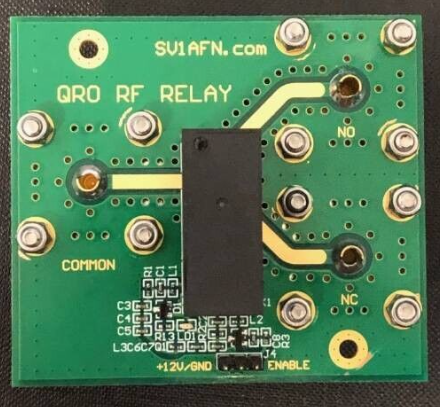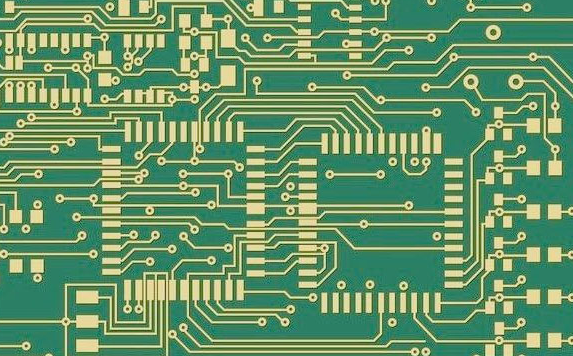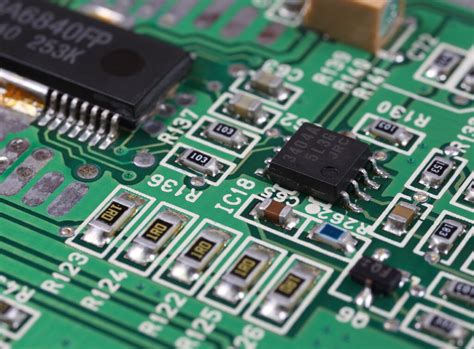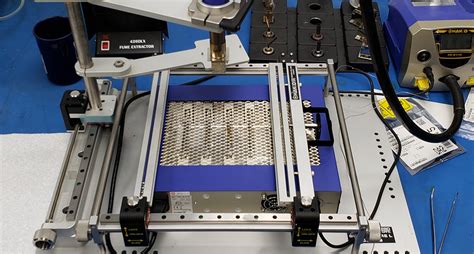Pcb rf relay
Understanding The Basics Of PCB RF Relays
Printed Circuit Board (PCB) Radio Frequency (RF) relays are integral components in modern electronic systems, particularly in applications requiring the switching of RF signals.
These devices are designed to handle high-frequency signals with minimal loss and distortion, making them essential in telecommunications, aerospace, and various other high-tech industries. To fully appreciate the significance of PCB RF relays, it is crucial to understand their basic functionality, construction, and applications.
At the core, a PCB RF relay operates as an electromechanical switch that can open or close circuits, thereby controlling the flow of RF signals.
Unlike standard relays, RF relays are specifically engineered to manage high-frequency signals, which can range from a few megahertz (MHz) to several gigahertz (GHz). This capability is achieved through meticulous design considerations that minimize signal loss, impedance mismatches, and other forms of signal degradation.
The construction of a PCB RF relay typically involves a combination of materials and design techniques that ensure optimal performance at high frequencies.
The relay’s contacts are often made from materials with excellent conductivity and low resistance, such as gold or silver alloys. These materials help to maintain signal integrity by reducing contact resistance and preventing signal attenuation. Additionally, the relay’s housing is designed to shield the internal components from external electromagnetic interference (EMI), which can adversely affect signal quality.
Transitioning to the operational aspects, PCB RF relays are actuated by an electromagnetic coil that, when energized, creates a magnetic field.
This magnetic field moves an armature, which in turn opens or closes the contacts within the relay. The switching mechanism must be precise and rapid to ensure that the RF signals are transmitted with minimal delay and distortion. The relay’s design often includes features such as low insertion loss, high isolation, and excellent return loss to further enhance its performance in RF applications.
In terms of applications, PCB RF relays are indispensable in a variety of fields.
In telecommunications, they are used in base stations, satellite communications, and radar systems to switch between different signal paths or to isolate certain components. In aerospace, these relays are employed in avionics systems to manage communication and navigation signals. Additionally, they find use in test and measurement equipment, where precise control of RF signals is necessary for accurate testing and analysis.
Moreover, the integration of PCB RF relays into modern electronic systems offers several advantages.
Their compact size and ability to be mounted directly onto PCBs make them ideal for space-constrained applications. This integration also simplifies the overall design and reduces the need for additional wiring and connectors, which can introduce unwanted signal losses and complexity. Furthermore, advancements in relay technology have led to the development of relays with higher switching speeds, greater durability, and improved reliability, thereby expanding their applicability in cutting-edge technologies.
In conclusion, PCB RF relays are critical components that enable the efficient and reliable switching of high-frequency signals in various advanced electronic systems. Their specialized design and construction ensure minimal signal degradation, making them suitable for demanding applications in telecommunications, aerospace, and beyond. Understanding the basics of these relays, from their operational principles to their practical applications, provides valuable insight into their role in modern technology. As electronic systems continue to evolve, the importance of PCB RF relays is likely to grow, underscoring their significance in the ever-expanding landscape of high-frequency signal management.

Top Applications Of PCB RF Relays In Modern Electronics
PCB RF relays, or printed circuit board radio frequency relays, have become indispensable components in modern electronics, offering a myriad of applications that leverage their unique capabilities. These relays are designed to switch RF signals with minimal loss and distortion, making them ideal for a variety of high-frequency applications. As technology continues to advance, the demand for efficient and reliable RF relays has surged, leading to their widespread adoption in several key areas.
One of the primary applications of PCB RF relays is in telecommunications.
In this sector, the need for high-speed data transmission and reliable signal integrity is paramount. RF relays are used in base stations, satellite communication systems, and mobile devices to switch between different signal paths, ensuring optimal performance and minimal interference. Their ability to handle high-frequency signals with precision makes them crucial for maintaining the quality and reliability of communication networks.
Another significant application of PCB RF relays is in the field of aerospace and defense.
In these industries, the performance and reliability of electronic components can be a matter of national security. RF relays are employed in radar systems, electronic warfare equipment, and communication systems used in aircraft and spacecraft. Their robust design and ability to operate under extreme conditions make them suitable for these high-stakes applications. Additionally, the miniaturization of RF relays allows for more compact and lightweight designs, which is a critical factor in aerospace engineering.
The medical field also benefits from the use of PCB RF relays, particularly in diagnostic and therapeutic equipment.
Devices such as MRI machines, ultrasound systems, and wireless medical telemetry rely on RF relays to switch and route signals accurately. The precision and reliability of these relays ensure that medical professionals can obtain clear and accurate diagnostic information, which is essential for patient care. Furthermore, the use of RF relays in wireless medical devices enhances patient mobility and comfort, contributing to better healthcare outcomes.
In the realm of consumer electronics, PCB RF relays play a vital role in devices such as smartphones, tablets, and wireless routers.
These relays enable the seamless switching of RF signals, which is essential for maintaining strong and stable connections in wireless communication. As consumer demand for faster and more reliable wireless connectivity grows, the importance of high-performance RF relays in these devices cannot be overstated. They help to ensure that users experience minimal signal dropouts and interference, leading to a better overall user experience.
The automotive industry is another area where PCB RF relays are making a significant impact.
Modern vehicles are equipped with a plethora of electronic systems that rely on RF signals, including GPS navigation, keyless entry, and advanced driver-assistance systems (ADAS). RF relays are used to manage these signals, ensuring that they are transmitted and received accurately. This is particularly important for safety-critical applications such as ADAS, where the reliability of electronic components can directly affect vehicle safety.
In conclusion, PCB RF relays are integral to the functioning of various modern electronic systems across multiple industries. Their ability to switch high-frequency signals with minimal loss and distortion makes them essential for telecommunications, aerospace and defense, medical devices, consumer electronics, and automotive applications. As technology continues to evolve, the role of RF relays in ensuring the reliability and performance of electronic systems will only become more critical.

Design Considerations For PCB RF Relays In High-Frequency Circuits
When designing high-frequency circuits, the integration of PCB RF relays necessitates meticulous attention to various design considerations to ensure optimal performance. The primary objective is to maintain signal integrity while minimizing losses and interference, which can be particularly challenging given the complexities inherent in high-frequency applications. Therefore, understanding the critical factors that influence the performance of PCB RF relays is essential for engineers and designers.
One of the foremost considerations is the selection of appropriate materials.
The dielectric properties of the substrate material play a crucial role in determining the overall performance of the RF relay. Materials with low dielectric constant and low loss tangent are preferred as they help in reducing signal attenuation and maintaining signal integrity. Commonly used materials include PTFE (Polytetrafluoroethylene) and Rogers laminates, which offer excellent high-frequency performance.
In addition to material selection, the physical layout of the PCB is of paramount importance.
The layout must be designed to minimize parasitic inductance and capacitance, which can adversely affect the relay’s performance. This involves careful routing of signal traces, ensuring that they are as short and direct as possible. Moreover, maintaining consistent trace width and spacing is essential to prevent impedance mismatches, which can lead to signal reflections and loss.
Another critical aspect is the grounding strategy.
A solid and continuous ground plane is indispensable for high-frequency circuits as it provides a low-impedance return path for the signals, thereby reducing noise and crosstalk. The ground plane should be as close as possible to the signal traces to minimize loop inductance. Additionally, the use of via stitching can further enhance the grounding by providing multiple paths for the return current, thereby improving the overall performance of the RF relay.
Thermal management is another vital consideration in the design of PCB RF relays.
High-frequency circuits often generate significant amounts of heat, which can affect the relay’s performance and reliability. Effective thermal management strategies, such as the use of thermal vias, heat sinks, and proper ventilation, are essential to dissipate heat and maintain the relay’s operational stability.
Furthermore, the choice of the relay itself is critical.
RF relays are available in various configurations, including electromechanical and solid-state types. Each type has its advantages and limitations. Electromechanical relays offer low insertion loss and high isolation but may suffer from slower switching speeds and shorter lifespans. On the other hand, solid-state relays provide faster switching speeds and longer lifespans but may introduce higher insertion loss and lower isolation. Therefore, the selection of the relay should be based on the specific requirements of the application, considering factors such as frequency range, power handling capability, and switching speed.
Lastly, simulation and testing are indispensable steps in the design process.
Advanced simulation tools can help predict the performance of the PCB RF relay in the actual operating environment, allowing for the identification and mitigation of potential issues before fabrication. Once the PCB is fabricated, thorough testing is necessary to validate the design and ensure that it meets the desired performance criteria.
In conclusion, the design of PCB RF relays in high-frequency circuits involves a comprehensive understanding of material properties, layout techniques, grounding strategies, thermal management, relay selection, and rigorous testing. By carefully considering these factors, engineers can achieve high-performance designs that meet the stringent demands of modern high-frequency applications.
Comparing PCB RF Relays: Key Features And Performance Metrics
When comparing PCB RF relays, it is essential to consider a variety of key features and performance metrics to ensure optimal functionality and reliability in high-frequency applications. These relays, integral to many electronic systems, facilitate the switching of RF signals with minimal loss and distortion. As such, understanding their specifications and performance characteristics is crucial for engineers and designers.
One of the primary features to evaluate in PCB RF relays is their frequency range.
The frequency range indicates the spectrum over which the relay can effectively operate without significant signal degradation. Typically, RF relays are designed to handle frequencies from a few megahertz (MHz) to several gigahertz (GHz). The choice of relay should align with the specific frequency requirements of the application to ensure efficient signal transmission.
Another critical metric is the insertion loss, which measures the amount of signal power lost when the signal passes through the relay.
Lower insertion loss is desirable as it indicates that the relay can transmit the signal with minimal attenuation. This is particularly important in high-frequency applications where even small losses can significantly impact overall system performance. Engineers should look for relays with insertion loss values that meet the stringent requirements of their specific use cases.
Isolation is another vital parameter to consider.
It refers to the relay’s ability to prevent signal leakage between its input and output terminals when in the off state. High isolation is crucial in RF applications to avoid cross-talk and interference, which can degrade signal integrity and system performance. Relays with high isolation values are preferred for applications requiring stringent signal separation.
The switching speed of PCB RF relays is also a significant factor, especially in applications where rapid signal routing is necessary.
Switching speed is the time it takes for the relay to change from one state to another, typically measured in milliseconds or microseconds. Faster switching speeds enable more efficient and responsive systems, which is particularly beneficial in dynamic environments where quick signal changes are frequent.
Power handling capability is another essential feature to consider.
This metric indicates the maximum power level that the relay can handle without damage or performance degradation. In RF applications, where power levels can vary widely, selecting a relay with appropriate power handling capabilities ensures longevity and reliability. Relays with higher power handling capacities are suitable for applications involving high-power RF signals.
Additionally, the physical size and form factor of the relay are important considerations, especially in compact or densely populated PCB designs.
Smaller relays can save valuable board space and allow for more flexible design layouts. However, it is crucial to balance size with performance characteristics to ensure that the relay meets all necessary operational requirements.
Durability and lifecycle are also key factors in the selection process. The relay’s lifecycle, often specified in terms of the number of switching cycles it can endure, directly impacts the longevity and maintenance requirements of the system. Relays with higher lifecycle ratings are preferred for applications where frequent switching is expected, as they reduce the need for replacements and associated downtime.
In conclusion, comparing PCB RF relays involves a thorough evaluation of various features and performance metrics, including frequency range, insertion loss, isolation, switching speed, power handling capability, physical size, and durability. By carefully considering these factors, engineers and designers can select the most suitable relay for their specific high-frequency applications, ensuring optimal performance and reliability.






